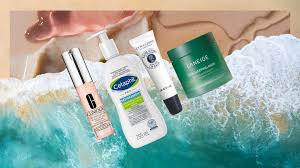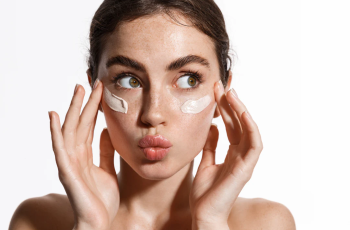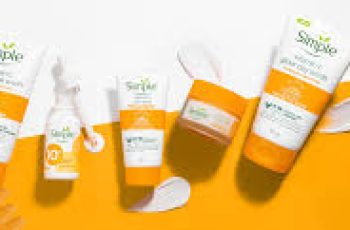
Toxic Ingredients in Skincare: A Dermatologist’s Guide
Are You Applying Harmful Ingredients to Your Skin Without Knowing It?
Many ingredients used in skincare and cosmetic products are restricted or banned around the world due to concerns about toxicity, environmental harm, or health risks.
You may have heard of the “Dirty Dozen” list of harmful cosmetic ingredients—but the truth is, there are far more than 12 ingredients worth scrutinizing.
As a dermatologist with over 20 years of experience writing and researching skincare ingredients—including authoring books and a monthly column for dermatologists—I want to give you a reliable,
science-backed tool to help you avoid harmful substances in your routine.
Why the Word “Toxic” Isn’t Always Accurate
Let’s clarify: the term “toxic” technically refers to a substance that is poisonous and can cause illness or death.
However, in the skincare world, “toxic” is often used more broadly to describe ingredients that may cause:
Skin irritation
Hormonal disruption
Allergic reactions
Environmental damage
While not all these effects qualify as true “toxicity” from a toxicology standpoint, they are still valid concerns for consumers and professionals alike.
I will use the term “toxic” here for ease of reference, while distinguishing between actual health risks and misinformation.
The “Toxic” Skincare Ingredients List: What to Watch Out For
This list is based on scientific literature, regulatory reviews, and clinical experience.
Some of these ingredients are still legal, but are best avoided for long-term health, safety, or environmental reasons.
Top Toxic Ingredients to Avoid
Butylated Hydroxyanisole (BHA)
Butylated Hydroxytoluene (BHT)
Butylparaben
Isobutylparaben
Phenoxyethanol (in concentrations >1%)
Petrolatum and mineral oil (environmental concerns)
Phthalates (e.g., DEP, DBP, DEHP)
Polyethylene Glycols (PEGs)
Siloxanes (e.g., D4, D5)
Triclosan
Ethanolamines (e.g., DEA, TEA, cocamide DEA)
How Cosmetic Ingredients Can Be Harmful
Ingredients can impact human health and the planet in many ways. Below are categories of concern:
Health-Related Risks
Endocrine (hormone) disruption
Allergies and contact dermatitis
Lung and eye irritation
Cancer risk (in some animal studies or industrial exposure)
Increased penetration of harmful substances through the skin
Phototoxicity (sun sensitivity)
Reproductive issues (especially with phthalates)
Environmental Risks
Marine toxicity and coral bleaching
Chemical accumulation in water supplies
Sustainability issues (e.g., water-intensive crops)
Pesticide contamination from botanicals
Harmful byproducts during manufacturing
Human Safety vs. Environmental Safety
It’s crucial to evaluate ingredient safety through two lenses:
Is it safe for human skin and systemic health?
Is it safe for the planet?
An ingredient can be safe topically but harmful to marine ecosystems (e.g., microbeads). Conversely, a “natural” extract may be eco-friendly but cause allergies or irritation.
In-Depth Look at Key Toxic Ingredients
Ethanolamines (e.g., DEA, MEA, TEA)
Used in foaming cleansers and emulsifiers.
May form nitrosamines, which are carcinogenic, when mixed with nitrogen compounds.
Safe in rinse-off products, and when not used with such preservatives.
Avoid if pregnant, using slugging routines, or on infants.
Parabens
Types: Methylparaben, Propylparaben, Butylparaben, Isobutylparaben
Some have weak estrogenic activity—but only butyl- and isobutylparaben show more significant binding.
Methyl- and propylparaben are generally safe in low concentrations.
If you are pregnant or using products on children, avoid butyl- and isobutylparaben.
Phthalates
Found in fragrances, nail polish, and plastic packaging.
DBP, DEHP, and DEP raise concern over reproductive and developmental risks.
Of highest concern for fetuses, infants, and hormonal health.
Choose phthalate-free or fragrance-free products when possible.
Petrolatum and Mineral Oil
Not inherently toxic if highly refined (medical grade).
Main concern is environmental—petroleum drilling and refining contribute to climate change.
No proven link to cancer or health issues with refined versions.
Choose alternatives if you prefer more sustainable options.
Phenoxyethanol
Safe at <1% concentrations (EU and US guidelines).
Low risk of irritation and rare allergic responses.
Used as a preservative and sometimes hidden in “fragrance”.
Lack of labeling transparency is the biggest issue.
Polyethylene Glycols (PEGs)
Commonly used as humectants, emulsifiers, and penetration enhancers.
May be contaminated with 1,4-dioxane or ethylene oxide during manufacturing.
Purification and quality control are key—some PEGs are restricted in clean beauty.
Siloxanes (D4, D5, D6)
Used for smoothing texture in cosmetics.
Persistent environmental pollutants that bioaccumulate.
Some may interfere with reproductive hormones in animal studies.
Banned or restricted in several countries.
Triclosan
Antibacterial once common in soaps and toothpaste.
Linked to thyroid hormone disruption, antibiotic resistance, and environmental damage.
Now banned or restricted in many countries.
Natural vs. Synthetic: Which Is Safer?
Natural does not always mean safer. Some “green” ingredients like cocamide DEA (from coconut oil) can form nitrosamines when combined with preservatives.
Others, like essential oils and botanical extracts, may trigger severe allergic reactions.
Misleading Terms to Watch For
“Fragrance” or “parfum” – can include 100+ undisclosed chemicals
“Natural” – not regulated and often includes synthetic preservatives or allergens
“Preservative-free” – may actually use hidden preservatives like phenoxyethanol
How to Protect Yourself from Toxic Ingredients
Tips for Safe Skincare
Learn to read full ingredient labels
Use fragrance-free or dermatologist-tested products
Prefer brands with transparent ingredient sourcing
Avoid products with vague claims like “natural” or “clean” unless certified
Use skincare routines that are compatible—ingredients can interact negatively!
Reputable Sources for Ingredient Safety
Cosmetic Ingredient Review (CIR)
Environmental Working Group (EWG)
Peer-reviewed medical journals
Dermatologists with ingredient expertise
EquityWellness.org – Advocating inclusive skincare science across all skin tones.
Final Thoughts from a Dermatologist
The safety of skincare ingredients is complex and context-dependent.
Just because an ingredient is controversial doesn’t mean it’s dangerous for everyone—but long-term, large-scale use of certain ingredients can raise legitimate health or environmental concerns.
Always consider:
The type of product (rinse-off vs. leave-on)
Frequency of use
Vulnerability of the user (e.g., babies, pregnant individuals)
The interactions between products in your routine
Let us help you build a safe, evidence-based skincare routine tailored to your Baumann Skin Type®. Knowing your skin type is the first step to choosing products that are both safe and effective.
Would you like this turned into:
A PDF resource?
A web article or blog post?
A presentation deck?
Let me know your format preference, and I can create it for you.


